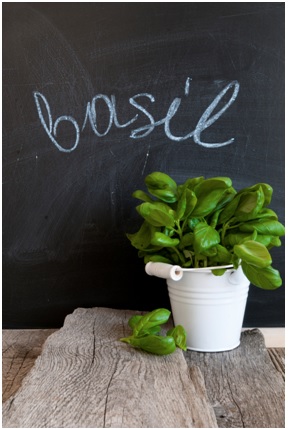
Gardening Don'ts
June 05, 2015
Gardening is one of life's simple pleasures.
But that said, there's a bit of a knack to this art form too. We're not all gifted with a green thumb, and when it comes to our gardens, we're all guilty of having committed a few gardening faux pas in our time.
If you fancy brushing up on your gardening skills and banishing those horticultural bad habits, then you're in luck, as we've put together a quick guide to some of the most common garden mistakes, so you can avoid gardening don'ts, and grow like a pro.

Mistaken Identity
Keeping track of all the plants in your garden can be no mean feat. And when you throw a few pesky weeds into the mix, things can get whole lot more complicated.
It may sounds a little unbelievable, but mistaking plants for weeds is actually one of the most common gardening sins. To the untrained eye, several plant species can look like weeds, especially when they first start sprouting, so it can be an easy blunder to make.
If you want to avoid this gardening transgression then it's best to make a point of labelling the plants in your garden with a few markers, so you know exactly what should be growing in a particular area.
This is easy to achieve and you can even have a go at making a few plants markers of your own, using some ice lolly sticks - simple!

Too Close
Another common gardening dilemma, is how close is too close? On the one hand you want your garden to be bursting with beautiful blooms, but packing plants in like a tin of sardines, can be a recipe for disaster.
Plants require space, so that they can spread their roots and stems and receive adequate sunlight and moisture. Growing plants too closely together can have a noticeable impact on their development. This is because they have to compete with one another for access to resources. For example, when overcrowded, plants will often grow taller to receive light, rather than developing a leafier silhouette.
Overall, planting too close together can have a negative impact both on the growth potential of plants and also their health. That's why it's important to give the blooms in your garden enough space to, well, bloom!

Failing to Prepare Your Soil
As the old saying goes, by failing to prepare you are preparing to fail. And when it comes to the soil in your garden, this adage rings true too. After all, without good soil, no garden can thrive.
Preparing the ground in advance will give your plants the best start in life. But remember, you should always prepare the soil in your garden before planting, as once the seeds are in the soil and begin establishing their roots, disturbing the soil around them may put them in peril!
Start by cleaning up any rubbish and debris from the soil, and getting rid of any lingering weeds.
With this groundwork out of the way you can then grab a spade and get digging!
One if the simplest ways to prepare the soil in your garden is to simply do a bit of digging. No, really! This simple technique, which involves digging up an area of soil, turning it over, and dropping it back into the same hole, is a fantastic method for cultivating the soil in your garden. And the great thing is, all it requires is a little elbow grease.
With this task out of the way you can then add some fertiliser to your soil - in the form of some well-rotted manure or compost.
As a handy tip, it's a good idea to test the soil in your garden to find out exactly what type of soil you have too. You can then work out exactly what it needs, based on what it is you're hoping to grow.

Avoid these gardening don'ts and yout backyard will be a plant filled paradise in no time.
Here at Verdon Grey we're passionate about gardens, and all things gardening! We're suppliers of an incredible range of beautiful, high quality, contemporary garden furniture, perfect for adding that special finishing touch to your garden.
For more information about our fantastic furniture, simply contact our friendly team today, by giving us a call on 01284 812000.
© Verdon Grey Ltd 2013 | Design by Cubiqdesign.








